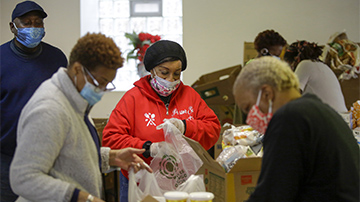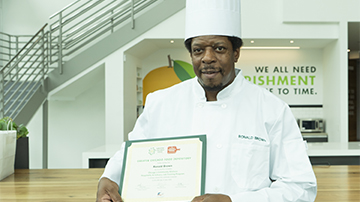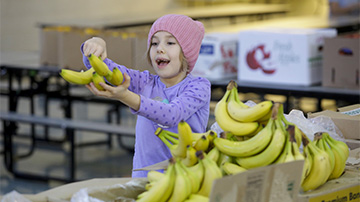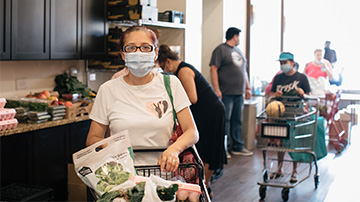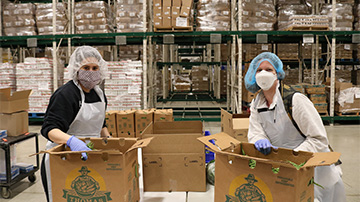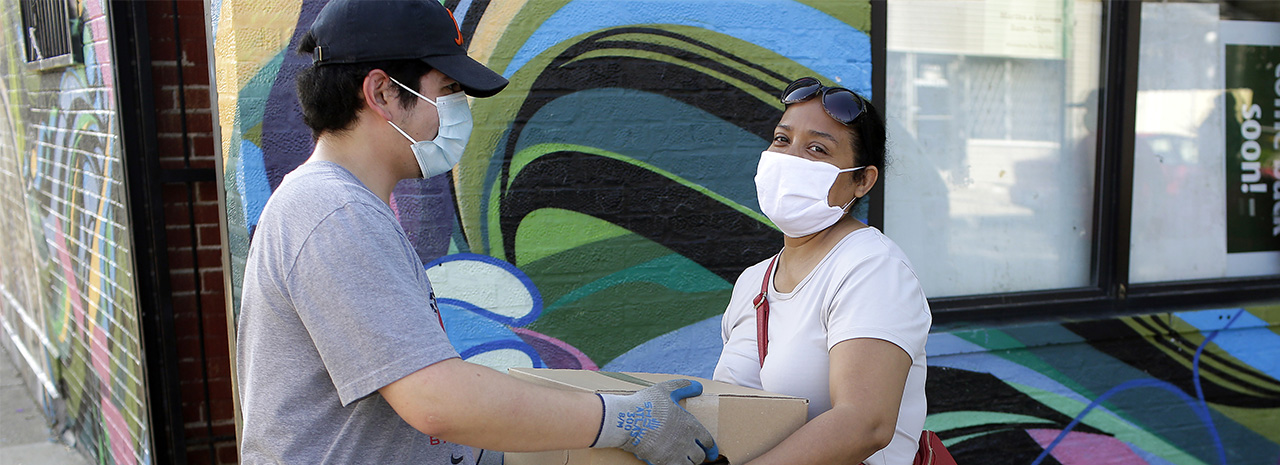
Expanding Access with Pop-up Sites
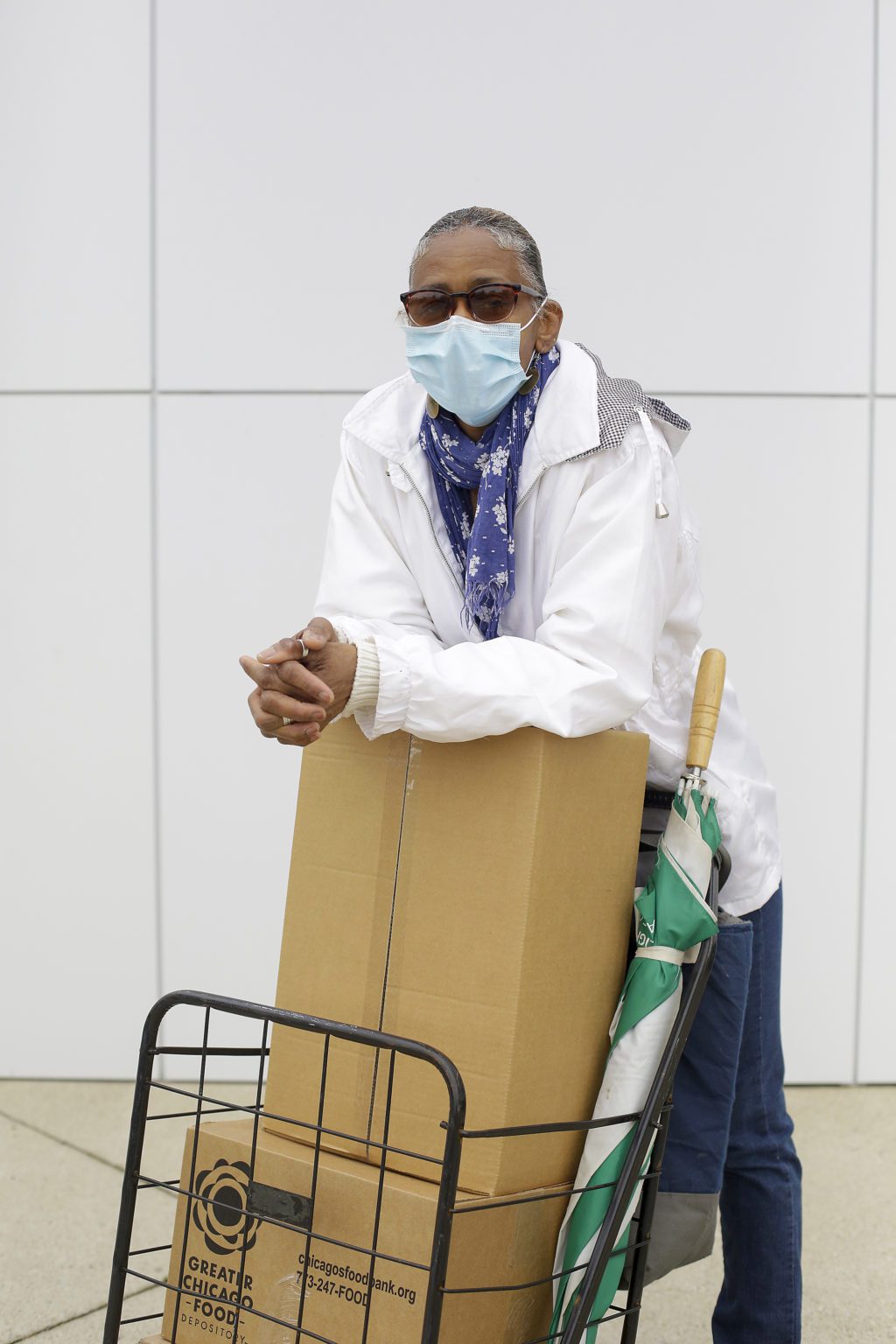
Like many others, Wainwright’s lost her contract job as a result of the pandemic. Earlier this summer, she was one of about 1,000 households that received a box of nonperishable goods, fresh produce and meat from the pop-up hosted by her church, Trinity United Church of Christ – one of the Food Depository’s new partners in food distribution.
Early in the pandemic, it became clear that Black and Latino communities on the South and West Sides were disproportionately affected by the combination of COVID-19 and food insecurity. At the Food Depository, we’ve served those communities for years, but we also realized that more needed to be done in this time of crisis.
Beginning in late April, the Food Depository partnered with faith and community groups, and in collaboration with the city of Chicago, to launch new food pop-up food distributions the neighborhoods that were hardest hit because of racial inequities. Several of the pop-ups, as they came to be known, served about 1,000 families per week.
For people like Wainwright, whose lives had been upended by the pandemic, the pop-ups provided an important source of fresh produce, protein and dairy during the crisis.
“To come here, it’s been a lot for me, because I’ve been able to stretch (my funds). I know what it’s like to not have.”
Verona Wainwright, South Side resident who turned to a pop-up food distribution
In fiscal year 2020, the Food Depository distributed the equivalent of about 5.5 million meals through the new pop-up food distributions.
Most of the pop-up distributions, which were part of the Food Depository’s emergency response, have now ended. But many of the new partnerships will continue in the months and years ahead. The Food Depository is in conversations with several of our new partners to determine a more sustainable longer-term response. What that looks like exactly will vary by community.
This much is clear – we’re stronger together. And this ongoing crisis will require a creative and collaborative approach to ending hunger.
